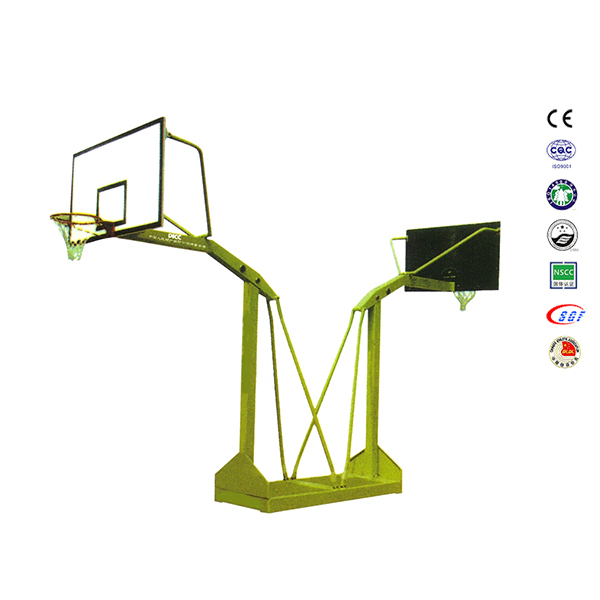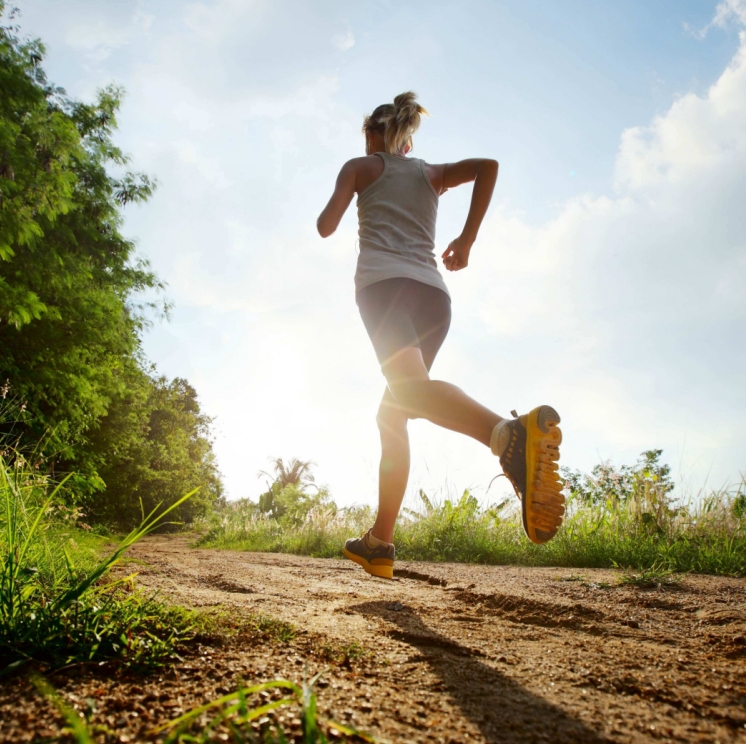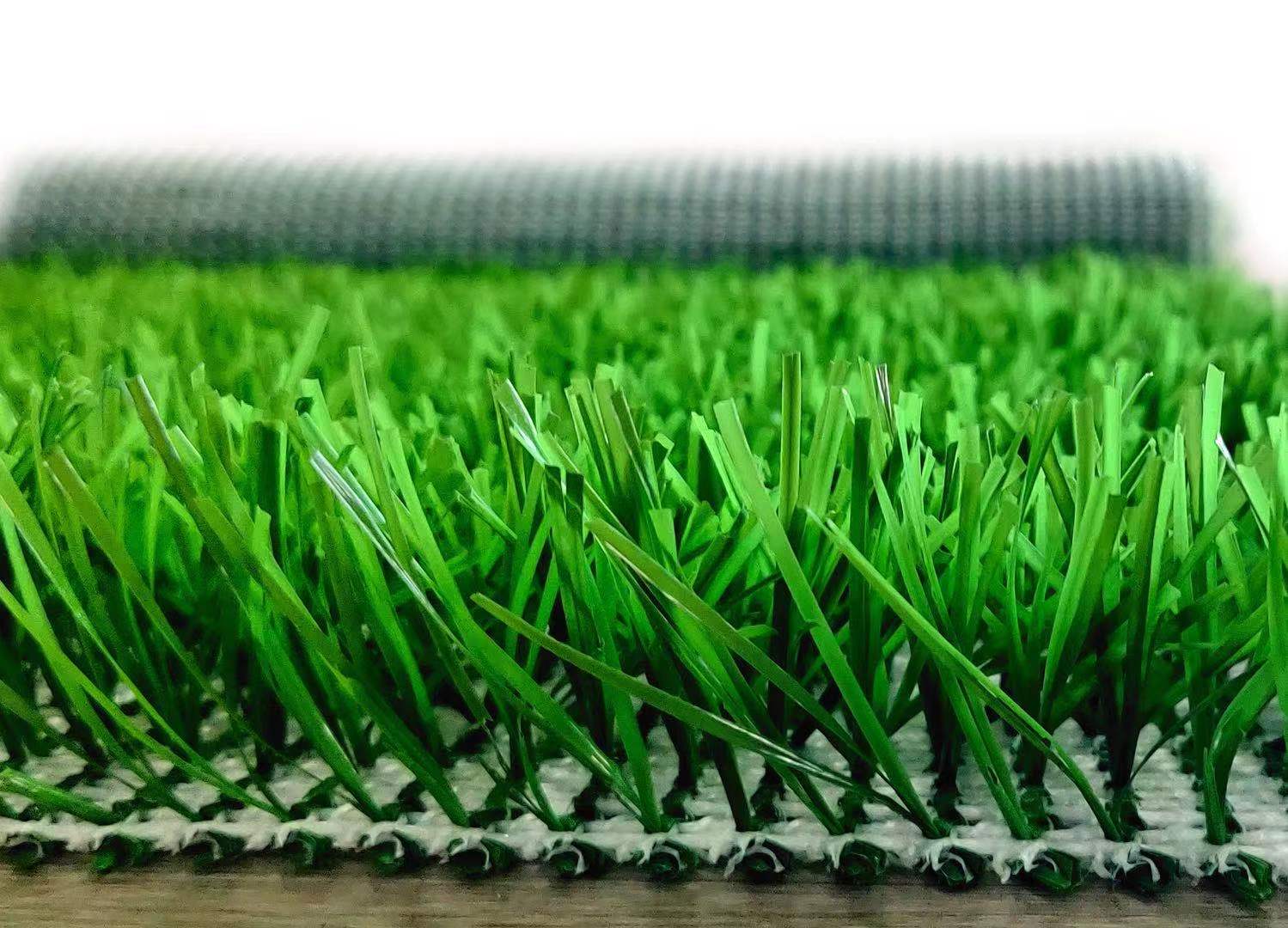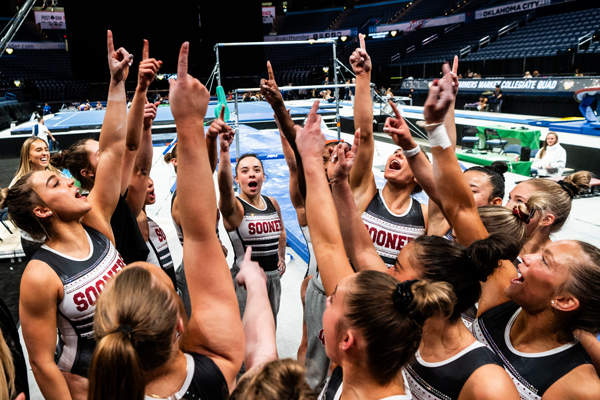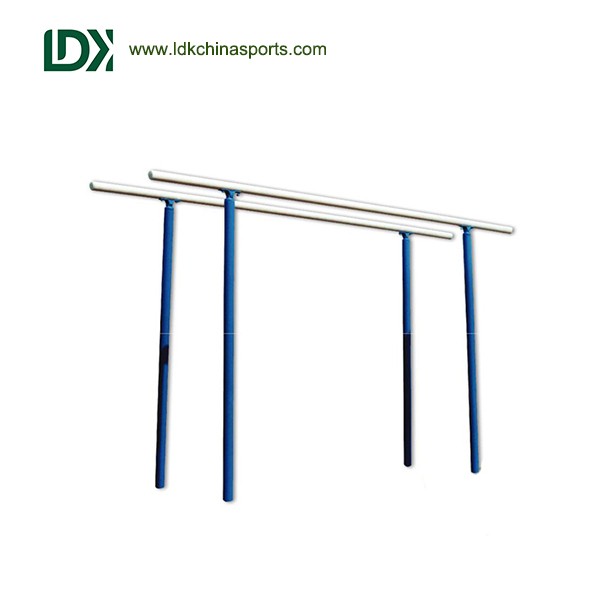Product
Gymnastics parallel bars exercises for beginners
Basic Info
The most common way to play the parallel bars is to swing with bent arms: place your hands on the horizontal bars on both sides, swing your body back and forth in the air, bend your arms when your legs swing back to the highest point, and then swing your legs forward from the back. With the help of inertia, your arms gradually straighten. When your legs swing to the highest point in front, your arms are already straight, and then your legs swing back naturally to enter the next round of action.
This game has high requirements for body coordination. At the same time, it also has a good training effect on the arm muscles and chest muscles. Students who play well can do dozens of bent arm swings in a row. When I first played this game, I didn't master its tricks. I couldn't keep my balance when swinging my body, and often fell off the parallel bars without doing a single swing. With the accumulation of experience, my skills became more and more proficient, and I was finally able to do several bent arm swings on the parallel bars in a row, and my arm muscles and chest muscles also became significantly stronger.
This game has high requirements for body coordination. At the same time, it also has a good training effect on the arm muscles and chest muscles. Students who play well can do dozens of bent arm swings in a row. When I first played this game, I didn't master its tricks. I couldn't keep my balance when swinging my body, and often fell off the parallel bars without doing a single swing. With the accumulation of experience, my skills became more and more proficient, and I was finally able to do several bent arm swings on the parallel bars in a row, and my arm muscles and chest muscles also became significantly stronger.
Hello, the parallel bars are a great exercise equipment, and I personally have a great love for them. I remember when I was on the parallel bars in high school, I didn't know how to play at first and didn't have the strength to support myself. At that time, I felt that my arm strength was too weak, so I tried doing push ups every night to improve my arm strength. One day during physical education class, I saw a classmate doing well, and he told me not only to exert force on his arms, but also on his waist.
Afterwards, I would practice the parallel bars every day. At the beginning, I practiced arm flexion and extension. Arm flexion and extension mainly exercise the chest muscles, triceps, and anterior deltoid muscles, as well as the latissimus dorsi and trapezius muscles. Therefore, the role of the parallel bars is too great, and practicing it well is very beneficial. I remember at that time, I would compete with a few classmates every day after class to do arm flexion and extension. It was quite enjoyable when I thought about it.
For beginners, it is important to coordinate arm strength and waist strength, and work hard at the same time. Make a plan for yourself every day, a few today and a few tomorrow, in order to improve. After persisting for a month, you will find significant changes in your triceps and chest muscles, and your strength will also improve significantly. If you can schedule friends, that would be even better. Only with competition can you have motivation.
Extend your legs downwards, slightly spread them apart, tighten your abdomen, keep your back straight, keep your eyes straight ahead, and maintain a steady position until you are exhausted.
Attention: It can strengthen the muscle strength of the arms and shoulders, and the longer you persist, the better the effect.
During training, do not overextend your arms on both sides, naturally sink your shoulders without shrugging, and naturally lower and straighten your legs.
Suggest doing 5 sets * 30 seconds.
Bend your legs slightly and bring them inward, tighten your core, and slowly raise your legs.
Stop until the front of the thigh approaches the abdomen, maintain body stability and remain motionless until exhausted.
Note: On the basis of strengthening the strength of the arms and shoulders, it can also exercise the core muscle group and lower abdominal muscles.
During training, always tighten your abdomen, keep your legs as straight as possible, and lift your hips slightly upwards. You can perform a slight chest lift.
Bend your knees and cross your calves backwards, tighten your abdomen, and slowly bend your elbows to press down.
Stop until the upper arm is parallel to the ground, then support the body upwards and repeat.
Note: It can strengthen the triceps brachii, anterior deltoid fasciculus, and lower pectoral muscles, as well as provide additional exercise for the upper back muscle group.
During training, maintain a slightly forward leaning posture, and when bending and lowering the elbow, do not lower the shoulders below the elbow to avoid shoulder injuries.
Suggest doing 5 groups * 10 times.
Until the upper body is completely bent down, support it on the parallel bars with your toes.
Tighten your abdomen, keep your back straight, bend your elbows and press down to the bottom to stop, then push your body upwards and repeat.
Note: It can strengthen chest muscle thickness, as well as exercise upper limb muscles and core strength.
In training, it is necessary to use the full grip method on the parallel bars, with legs extended and toes supported at both ends. If exhausted, only half of the movement can be performed, maintaining a uniform speed.
Suggest doing 5 sets * 8 times.
Tighten your abdomen, slightly hold your chest, lift your legs up towards the right side of your body, return to their original position, and then lift them up towards the left side of your body. Repeat this alternately.
Attention: It can strengthen the oblique muscles on both sides, as well as strengthen the lower abdomen and legs.
In training, it is necessary to tighten the core. When lifting the legs towards one side of the body, it is necessary to twist the body and try to raise the legs as high as possible to tighten the oblique muscles.
Suggest doing 4 sets * 12 times on each side.
LDK sports equipment manufacturer's promotion is in progress: Click to contact us now
Afterwards, I would practice the parallel bars every day. At the beginning, I practiced arm flexion and extension. Arm flexion and extension mainly exercise the chest muscles, triceps, and anterior deltoid muscles, as well as the latissimus dorsi and trapezius muscles. Therefore, the role of the parallel bars is too great, and practicing it well is very beneficial. I remember at that time, I would compete with a few classmates every day after class to do arm flexion and extension. It was quite enjoyable when I thought about it.
For beginners, it is important to coordinate arm strength and waist strength, and work hard at the same time. Make a plan for yourself every day, a few today and a few tomorrow, in order to improve. After persisting for a month, you will find significant changes in your triceps and chest muscles, and your strength will also improve significantly. If you can schedule friends, that would be even better. Only with competition can you have motivation.

Outdoor gymnastics parallel bars
The parallel bars are one of the common outdoor fitness equipment that usually require both hands to grip the bars, which can quickly improve the strength of upper limb muscles, as well as exercise the chest and abdominal muscles, and also strengthen the core muscle group. In the advanced stage, it can also complete high difficulty movements such as handstands and flips, suitable for fitness enthusiasts who have been training for a long time.
Here is a set of parallel bar training methods suitable for the general population:
Action 1: Straight leg support on parallel bars
After gripping the bar with both hands, jump up with force, and then support your body and straighten your arms.Extend your legs downwards, slightly spread them apart, tighten your abdomen, keep your back straight, keep your eyes straight ahead, and maintain a steady position until you are exhausted.
Attention: It can strengthen the muscle strength of the arms and shoulders, and the longer you persist, the better the effect.
During training, do not overextend your arms on both sides, naturally sink your shoulders without shrugging, and naturally lower and straighten your legs.
Suggest doing 5 sets * 30 seconds.
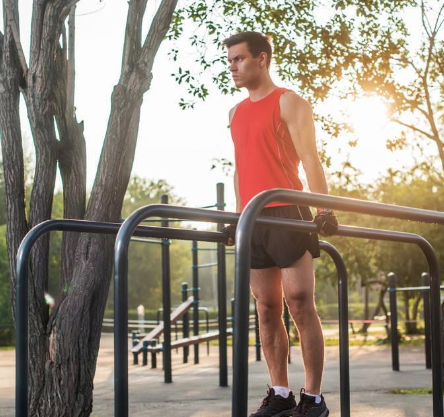
Parallel bar straight leg support
Action 2: Parallel Bar L-shaped Suspension
Grasp the bar with both hands, push your body upwards with force, and straighten your arms.Bend your legs slightly and bring them inward, tighten your core, and slowly raise your legs.
Stop until the front of the thigh approaches the abdomen, maintain body stability and remain motionless until exhausted.
Note: On the basis of strengthening the strength of the arms and shoulders, it can also exercise the core muscle group and lower abdominal muscles.
During training, always tighten your abdomen, keep your legs as straight as possible, and lift your hips slightly upwards. You can perform a slight chest lift.
Suggest doing 5 sets * 20 seconds.
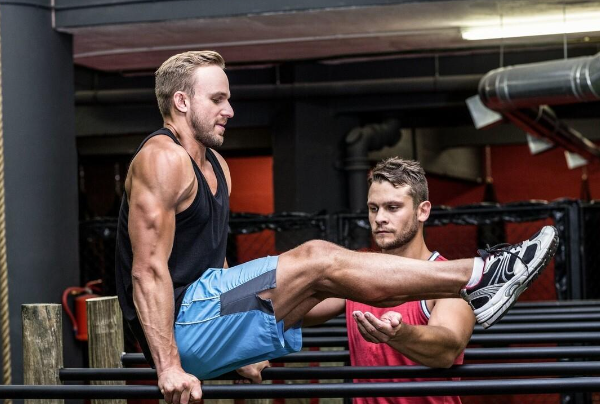
Gymnastics parallel bars L-hang
Action 3: Parallel bar arm flexion and extension
Grasp the bar with both hands and support the entire body upwards, then the body is suspended.Bend your knees and cross your calves backwards, tighten your abdomen, and slowly bend your elbows to press down.
Stop until the upper arm is parallel to the ground, then support the body upwards and repeat.
Note: It can strengthen the triceps brachii, anterior deltoid fasciculus, and lower pectoral muscles, as well as provide additional exercise for the upper back muscle group.
During training, maintain a slightly forward leaning posture, and when bending and lowering the elbow, do not lower the shoulders below the elbow to avoid shoulder injuries.
Suggest doing 5 groups * 10 times.
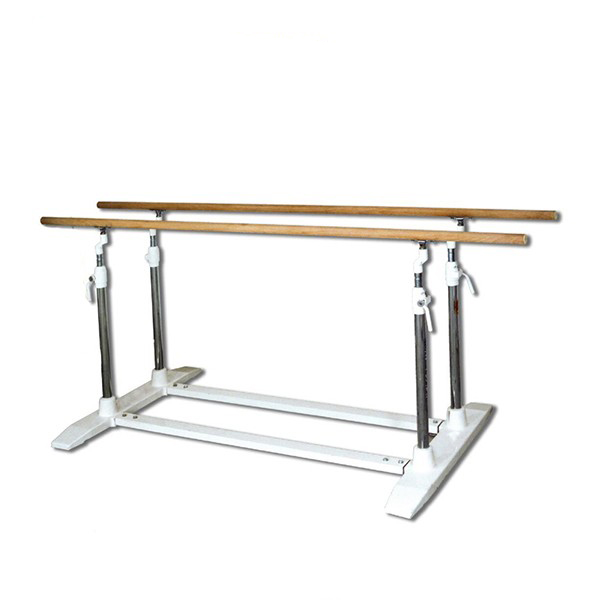
Gymnastics Bars Parallel Bars For Kids
Action 4: Parallel Bars Push ups
Grasp the bars with both hands to support your entire body, lean forward, and extend your legs back onto the parallel bars.Until the upper body is completely bent down, support it on the parallel bars with your toes.
Tighten your abdomen, keep your back straight, bend your elbows and press down to the bottom to stop, then push your body upwards and repeat.
Note: It can strengthen chest muscle thickness, as well as exercise upper limb muscles and core strength.
In training, it is necessary to use the full grip method on the parallel bars, with legs extended and toes supported at both ends. If exhausted, only half of the movement can be performed, maintaining a uniform speed.
Suggest doing 5 sets * 8 times.
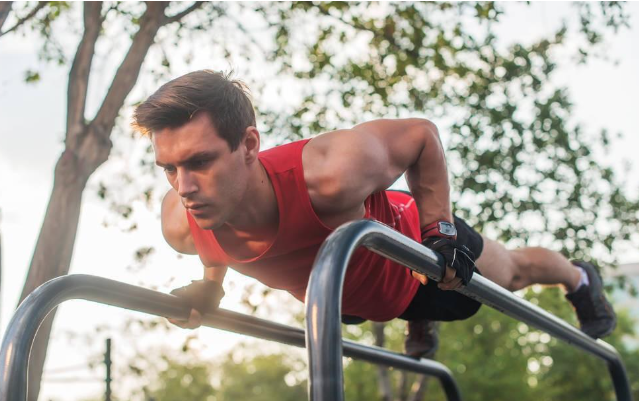
Gymnastics parallel bars push-ups
Action 5: Double bar side leg lift
Grasp the bar with both hands and support your body upwards, with both arms extended, while bending your legs and lifting them slightly upwards.Tighten your abdomen, slightly hold your chest, lift your legs up towards the right side of your body, return to their original position, and then lift them up towards the left side of your body. Repeat this alternately.
Attention: It can strengthen the oblique muscles on both sides, as well as strengthen the lower abdomen and legs.
In training, it is necessary to tighten the core. When lifting the legs towards one side of the body, it is necessary to twist the body and try to raise the legs as high as possible to tighten the oblique muscles.
Suggest doing 4 sets * 12 times on each side.
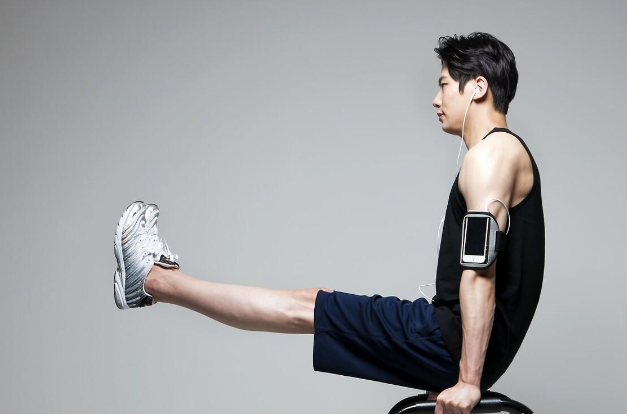
Gymnastics parallel bars side leg raise
Conclusion:
Among the 5 actions introduced above, the first 2 belong to static training actions and the last 3 belong to dynamic training actions.It is recommended to start training from the first movement and gradually advance the operation. Alternatively, you can alternate training one movement per day to effectively exercise the upper body muscles.
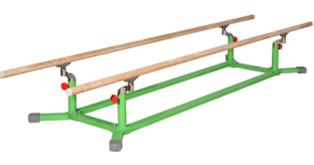
Professional Custom Gymnastics Parallel Bars
LDK sports equipment manufacturer's promotion is in progress: Click to contact us now






